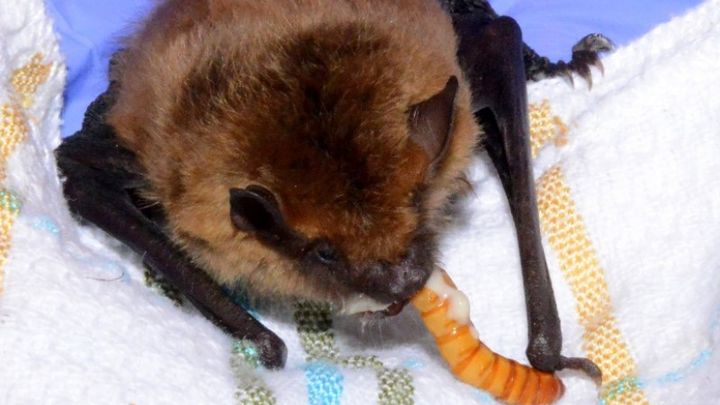
Bat Flight Cage for Wildlife Rescue
I am one of a very small number for wildlife rehabilitators in my state who works with bats. I work primarily with bats and opossum, as well as the occasional bunny or raccoon, and support my rescued animals out of my own pocket or via what few donations I receive from the people who bring me animals.
I am currently working on building an 8'x8' flight cage with a 4'x4' additional entry (to prevent escapes when entering or exiting the enclosure) for my rehabilitated bats. The ability to get in some flight time before release can drastically improve bats' success after release and allow hand raised orphans the opportunity to learn how to hunt and maneuver around obstacles in-flight.
Bats are estimated to save the agriculture industry at least $3.7 billion (possibly as much as $53 billion) in pest control each year. A single little brown bat can eat up to 1000 mosquitoes an hour and big brown bats are known to eat crop pests including green and brown stink bugs! Unfortunately, bat populations are in rapid decline for a number of reasons, including a devastating fungal infection known as White Nose Syndrome which has caused population declines of up to 90%. Researchers are working to find a solution for the White Nose issue, but until then, rehabilitators are working tirelessly to support the bats we have.
Please consider helping me to help our bats. They are truly amazing animals, and they have a huge impact on our daily lives, even if we rarely see them. Every donation you make goes directly to support animals in need, like this female big brown bat enjoying a nice, crunchy meal worm in the video and picture above.
The plan for the flight cage is to have an 8ft tall, 8'x8' enclosure with the 4'x4' entryway as stated above. I will be placing pallets on the ground with plywood topped with rubber mats on top. The plywwod will prevent any outside animals from digging in, and the mats prevent injury to the bats if they fall to the ground. The outside of the habitat will be 1/4" mesh, 23 gauge woven hardware cloth to prevent larger annimals from getting in. The wire can damage bats' delicate wing-tips however, so the inside of the habitat will have window screening or a similar, softer and tighter mesh.
Inside this habitat there will be tree branches, and hand-made crevices for the bats to roost in. This will provide them with safe places to hide as well as obstacles to learn to fly around in order to prepare them for release. This large outdoor habitat will also givve them space to reach full-speed and to hunt (I will make specialized insect traps to provide flighted food in addition to having readily available dishes of mealworms).
Breakdown of enclosure Costs:
Lumber: Free! (Lumber has been donated!)
Hardware Cloth: $304
Window Screen: $191.71
Hardware (hinges/screws/etc): ~$70-80 (give or take)
Please note that I am not asking for donations to cover the full cost of this enclosure (although that would be nice!). I would however like to be able to put a little extra money and care into furnishing the interior and for enrichment items.
If you are interested in helping me help wildlife in other ways, please see my amazon rehabilitation wishlist: http://amzn.com/w/3OPU1HAF8RANL
Rehabilitation of injured and orphaned animals is an ongoing process and a rehabilitator's job is never truly done.